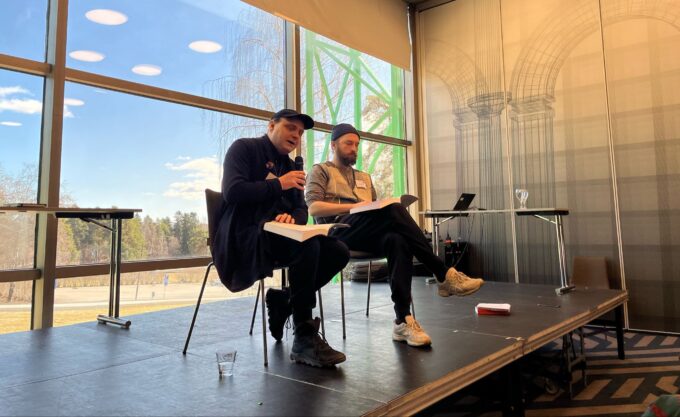Tag: Knutpunkt
-

Against design published in the larp anthology Liminal Encounters
The annual Nordic live action role-play conference Knutpunkt/Solmukohta usually comes with an anthology on different aspects of larp. This year’s title was LIMINAL ENCOUNTERS: Evolving Discourse in Nordic and Nordic-inspired Larp and it was edited by Kaisa Kangas and her team. There are many good contributions to this year’s book. I can specifically recommend “The…
-
“Enjoy it while it lasts”
All three books for the nordic live action role-playing (larp) conference Knudepunkt i now online as PDF. Each book has different approach, one of them being academic, another one documentary and a third one with more of a conversational style. I’ve contributed to the latter of them, with a short essay trying to read post-apocalyptic…
-
Alive and role-playing
Published in lifelike edited by Gade, Thorup, 2007. Article in PDF. Live role-playing. For the last few years we have been talking and writing a lot about the latter part of the concept. The role-playing has been the main focus. We say live role-playing developed from talking- heads tabletop role-playing games. That is of course…
-
Läslista för lajvare och rollspelare
Fëa, tidningen för levande rollspel, bad mig för runt ett år sedan att skriva ner några tankar om tio olika böcker relaterade till lajv. Jag skrev texten, men redaktionen beslutade sig för att lägga ner tidningen. Tanken var att låta fyra olika personer uttala sig om böckernas kvalitéer. Så blev det inte. De här utsagorna…
-
Kollektivt skrivande, experiment på Knutpunkt
Under vår workshop i kollektivt skrivande på Knutepunkt i Norge använde vi programmet SubEthaEdit, tre bärbara macar och en projektor. Programmet hette först Hydra (innan de blev stämda, någon annan hade ju trademark på det mytiska monstret från antika grekland!) och det begreppet har levt kvar som verb i vårt gäng. Att hydra en text…